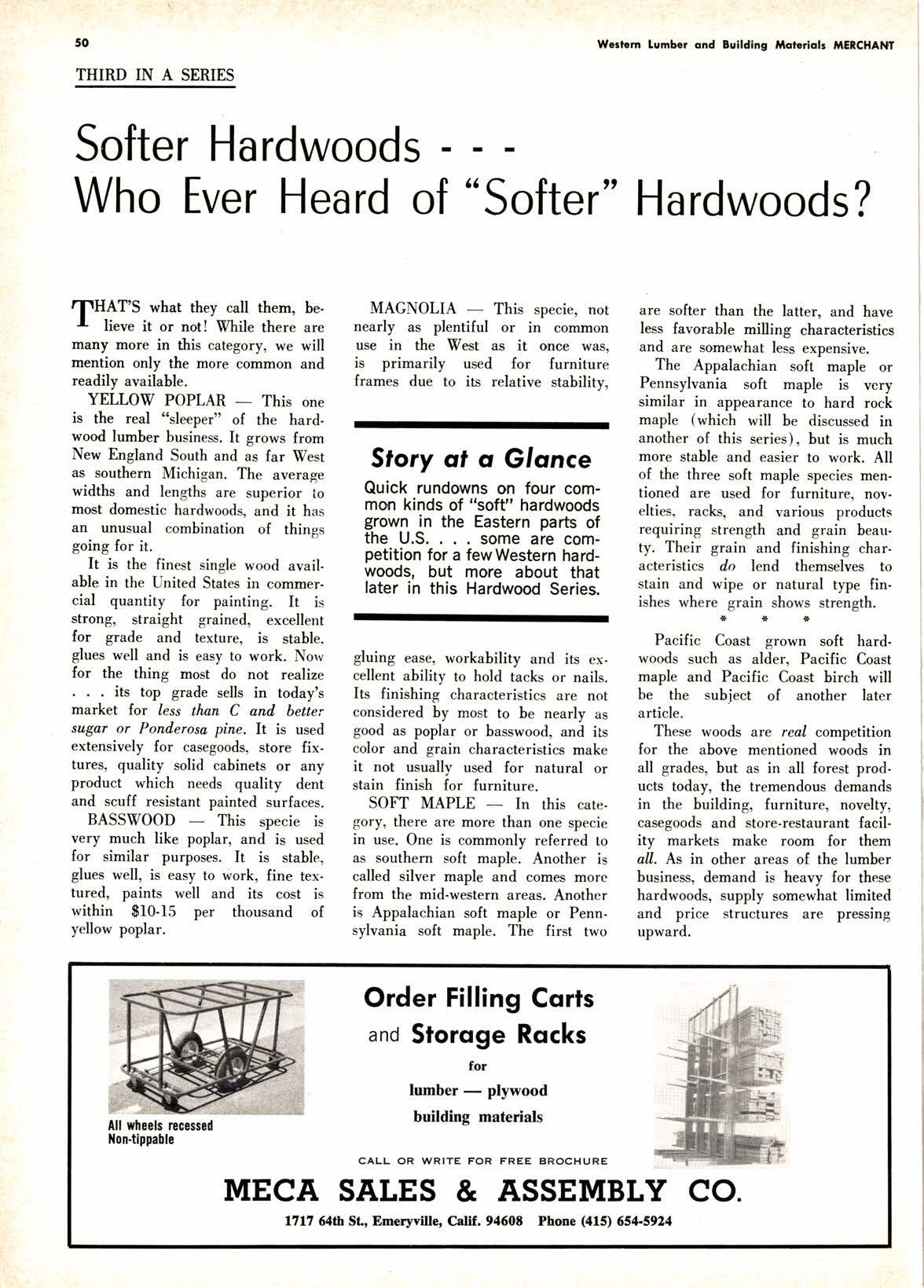
2 minute read
SofterHardwoodsr-Who Ever Heard of "Softer" Hardwoods?
rftHAT'S what they call them, ber lieve it or not! While there are many more in this category, we will mention only the more common and readily available.
YELLOW POPLARThis one is the real "sleeperoo of the hardwood lumber business. It grows from New England South and as far West as southern Michigan. The average widths and lengths are superior to moot domestic hardwoods, and it has an unusual combination of thines going for it.
It is the finest sinele wood available in the United Staltes in commercial quantity for painting. It is strong, straight grained, excellent for grade and textureo is stable. glues well and is easy to work. Norv for the thing most do not realize . its top grade sells in today's market for Jess than C and, better sugar or Ponderosa pine. lt is used extensively for casegoods, store fixtures, quality solid cabinets or any product which needs quality dent and scuff resistant painted surfaces.
BASSWOODThis specie is very much like poplar, and is used for similar purposes. It is stable, glues well, is easy to work, fine tex. tured, paints well and its cost is within $f0-f5 per thousand of yellow poplar.
MAGNOLIAThis specie, not nearly as plentiful or in common use in the West as it once was. is primarily used for furniture frames due to its relative stabilitv.
Story o] q Glonce
Quick rundowns on four common kinds of "soft" hardwoods grown in the Eastern parts of the U.S. . some are competition for a fewWestern hardwoods, but more about that later in this Hardwood Series.
gluing ease, workability and its excellent ability to hold tacks or nails. Its finishing characteristics are not considered by most to be nearly as good as poplar or basswood, and its color and grain characteristics make it not usually used for natural or stain finish for furniture.
SOFT MAPLEIn this categ;ory, there are more than one specie in use. One is commonly referred to as southern soft maple. Another is called silver maple and comes more from the mid.western areas. Another is Appalachian soft maple or Penn. sylvania soft maple. The first two
Order Filling Cqrts
Sforqge Rqcks
are softer than the latter. and have Iess favorable milling characteristics and are somewhat less expensive. The Appalachian soft maple or Pennsylvania soft maple is very similar in appearance to hard rock maple (which will be discussed in another of this series), but is much more stable and easier to work. All of the three soft maple species mentioned are used for furniture, nov. elties, racks, and various products requiring strength and grain bearrty. Their grain and finishing characteristics d,o lend themselves to stain and wipe or natural type finishes where*grain*shows strength.
Pacific Coast grown so{t hardwoods such as alder, Pacific Coast maple and Pacific Coast birch will be the subiect of another later article.
These woods are real competition for the above mentioned woods in all grades, but as in all forest products today, the tremendous demands in the building, furniture, novelty, casegoods and store-restaurant facility markets make room for them all, As in other areas of the lumber business, demand is heavy for these hardwoods, supply somewhat limited and price structures are pressing upward.










